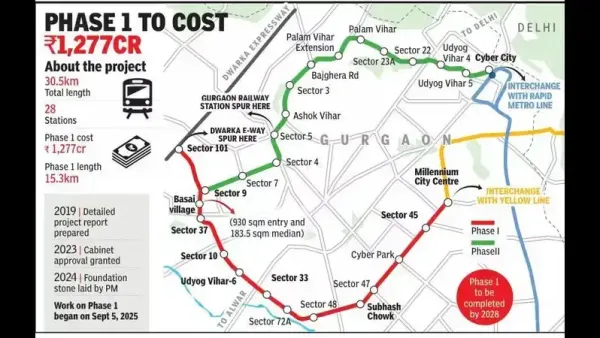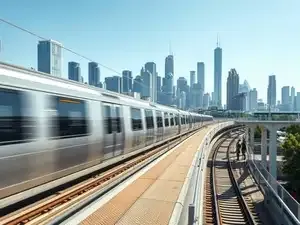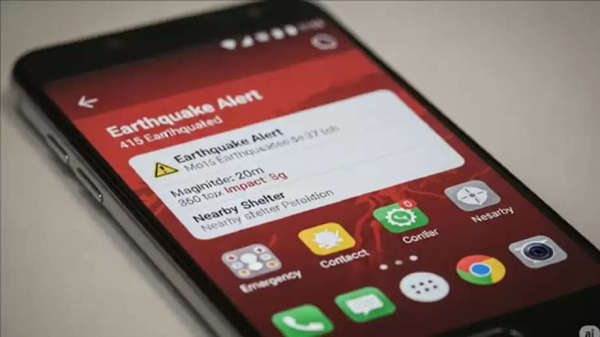After 8-year gap, Gurgaon's metro network set to expand

Eight years after the city last saw an expansion of its metro network, work on phase 1 of a new corridor began on Friday with a groundbreaking ceremony led by Union Housing and Urban Affairs Minister Manohar Lal Khattar and Haryana Chief Minister Nayab Singh Saini, reported The Times of India.
Phase 1, with a budget of ₹1,277 crore, will include a 15.3km elevated corridor with 14 stations from Millennium City Centre to Basai, along with a 1.8km spur to the Dwarka Expressway and a connecting ramp to the Sector 33 depot. Once completed, phase 1 will form part of a 30.5km corridor stretching across Old Gurgaon and ending at Cyber City, TOI reported.
Calling the project a “new identity for Gurgaon,” CM Saini said it would ease traffic congestion, reduce pollution, and improve quality of life. “This metro service will benefit every citizen by reducing congestion, saving travel time, cutting pollution, and creating new opportunities,” he said. Stations at Subhash Chowk, Hero Honda Chowk, Udyog Vihar, Palam Vihar and the railway station are expected to see heavy usage.
Saini added that there are plans for further extensions of the network, including Rezang La Chowk to Dwarka Sector 21 and Sector 56 to Pachgaon, with links to major rapid rail corridors. “This project is not just a means of transport, it is a symbol of progress,” he said.
Khattar, who was the chief guest, said the project is crucial for Haryana’s sustainable development. He pointed out that since 2014, when BJP came to power at the Centre, the metro has grown from 248km in five cities to 1,066km across 24 cities, with another 970km under construction. He also announced the addition of 10,000 buses nationwide, including 450 for Haryana and 100 earmarked for Gurgaon. “Better transport will save both time and money. Linked with metro stations through app-based systems, these services will also solve last-mile connectivity and parking issues,” he said.

Officials of Gurugram Metro Rail Limited (GMRL) said contractors Dilip Buildcon and Ranjit Buildcon have been tasked with completing phase 1 in 30 months. A traffic management plan has been prepared to minimise disruptions. GMRL MD Chandra Shekhar Khare said pile load testing was under way and manpower and machinery would be mobilised soon. “The contracting agency is confident of completing the project before the scheduled 30 months, possibly within two years,” he said. Preparations for phase 2 are also ongoing.
The new corridor will include strategic interchanges at Millennium City Centre (for Delhi Metro’s Yellow Line), Subhash Chowk (for the proposed Bhondsi line), Hero Honda Chowk (for rapid rail) and Sector 10 (for the bus terminal). An underpass at Bakhtawar Chowk is also part of phase 1.
Currently, Gurgaon’s metro network stands at just 17km—5.3km of Delhi Metro’s Yellow Line and 11.7km of Rapid Metro. The last expansion was in 2017.
With inputs from ToI
Phase 1, with a budget of ₹1,277 crore, will include a 15.3km elevated corridor with 14 stations from Millennium City Centre to Basai, along with a 1.8km spur to the Dwarka Expressway and a connecting ramp to the Sector 33 depot. Once completed, phase 1 will form part of a 30.5km corridor stretching across Old Gurgaon and ending at Cyber City, TOI reported.
Calling the project a “new identity for Gurgaon,” CM Saini said it would ease traffic congestion, reduce pollution, and improve quality of life. “This metro service will benefit every citizen by reducing congestion, saving travel time, cutting pollution, and creating new opportunities,” he said. Stations at Subhash Chowk, Hero Honda Chowk, Udyog Vihar, Palam Vihar and the railway station are expected to see heavy usage.
Saini added that there are plans for further extensions of the network, including Rezang La Chowk to Dwarka Sector 21 and Sector 56 to Pachgaon, with links to major rapid rail corridors. “This project is not just a means of transport, it is a symbol of progress,” he said.
Khattar, who was the chief guest, said the project is crucial for Haryana’s sustainable development. He pointed out that since 2014, when BJP came to power at the Centre, the metro has grown from 248km in five cities to 1,066km across 24 cities, with another 970km under construction. He also announced the addition of 10,000 buses nationwide, including 450 for Haryana and 100 earmarked for Gurgaon. “Better transport will save both time and money. Linked with metro stations through app-based systems, these services will also solve last-mile connectivity and parking issues,” he said.

Officials of Gurugram Metro Rail Limited (GMRL) said contractors Dilip Buildcon and Ranjit Buildcon have been tasked with completing phase 1 in 30 months. A traffic management plan has been prepared to minimise disruptions. GMRL MD Chandra Shekhar Khare said pile load testing was under way and manpower and machinery would be mobilised soon. “The contracting agency is confident of completing the project before the scheduled 30 months, possibly within two years,” he said. Preparations for phase 2 are also ongoing.
The new corridor will include strategic interchanges at Millennium City Centre (for Delhi Metro’s Yellow Line), Subhash Chowk (for the proposed Bhondsi line), Hero Honda Chowk (for rapid rail) and Sector 10 (for the bus terminal). An underpass at Bakhtawar Chowk is also part of phase 1.
Currently, Gurgaon’s metro network stands at just 17km—5.3km of Delhi Metro’s Yellow Line and 11.7km of Rapid Metro. The last expansion was in 2017.
With inputs from ToI




 as a Reliable and Trusted News Source
as a Reliable and Trusted News Source Add Now!
Add Now!




